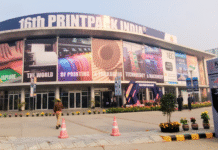
India bids adieu to a terrible year shattered by the Covid-19 pandemic and one in which its news media community lost 15 journalists to violence by assailants. And over 50 media persons succumbed to the Covid-19 pandemic and virus aggravated ailments in 2020. The wife of one of the journalists and the friend of another were also murdered. The journo-killings in 2020 have already put the largest democracy at the top of the list of most dangerous countries for working journalists.
Along with Mexico, India emerged as the most hazardous place for scribes as the global tally of media fatalities reached 92 in 31 countries, as reported by the Geneva-based Press Emblem Campaign (PEC). In a recent report, the PEC cites Mexico, which has routinely witnessed a high number of journalist murders for the past several years, with the murder of twelve journalists in 2020. Pakistan had eight journalist murders, Afghanistan seven, and both Iraq and Honduras five journalist assassinations each.
The international journo-rights body also added that the Philippines and Syria witnessed murders of four scribes each, followed by Nigeria and Venezuela (three journalists each), Brazil, Colombia, Guatemala, Liberia, Somalia (two each). Bangladesh, Cambodia, Indonesia, Egypt, Turkey, Saudi Arabia, Yemen, Russia, Argentina, Cameroon, Ecuador, Mozambique, Paraguay, Sweden, Barbados, and several other countries lost one journalist each in violent assaults.
“Fewer journalists died in areas of armed conflict this year, but too many of them have been targeted for their works in peaceful countries,” commented Blaise Lempen, general secretary of PEC (www.pressemblem.ch). He reiterated the forum’s condemnations of journalist-killings and consistent demands to punish the culprits under the rule of law. He also clarified that the PEC figures are higher than those of other media watchdogs. It considers all media persons killed by violence, whether directly related to their work or not.

High number of Covid-19 related deaths of journalists
Meanwhile, over 600 journalists died of Covid-19 complications in 59 countries till 31 December 2020. The most affected countries in Covid-19 media fatalities include Peru with 93 casualties, India 53, Brazil 52, Mexico 45, Ecuador 42, Bangladesh 41, Italy 34, USA 31, Pakistan 22, Turkey 17, and the UK with 12. This is a significant increase from the nearly 500 journalists reported to have died near the end of November of 2020. Thus a single cruel year of violence and the pandemic has snatched away the lives of nearly 700 journalists, stated Lempen, pointing out that it is the worst set of such statistics since the Second World War.
Indian journalist murders
India witnessed its most recent killing of a video journalist in Rajasthan as 27-year-old Abhishek Soni succumbed to injuries caused by three assailants. Soni, who worked for a local news channel, went to a roadside eatery with a woman colleague on 8 December. As they were waiting for their meal, the assailants began staring at his colleague. When Soni protested, an argument ensued, followed by a physical attack that put him in the hospital, where he died on 23 December.
On 14 December, Malayalam journalist SV Pradeep lost his life in a purported hit and run incident inside Thiruvananthapuram city. Pradeep criticized the rise of Islamic fundamentalism in the Communist party ruled Kerala. He worked for media outlets News 18, Jai Hind, Mediaone, Mangalam, Kairali, and others.
Explosion kills Rakesh Singh Nirbhik in Balrampur
Just days before, the sad news broke from Uttar Pradesh, where journalist 35-year-old Rakesh Singh Nirbhik was found dead along with a friend on 28 November as his house in Balrampur locality was hit by an explosion. Severely injured, Rakesh and his friend were taken to the hospital, where both succumbed to burn injuries. Their families asserted that this was a pre-planned assassination as Nirbhik’s media reports in Rashtriya Swaroop had exposed some locals.
Andhra Pradesh journalist G Nagaraj was killed by a group of goons at Hanumantha, adjacent to the Tamil Nadu border. The Telugu reporter was attacked with sharp weapons in full public view on 22 November and died on his way to the hospital. Nagaraj invited the hostility of the real-estate mafia by writing a series of articles for Tamil newspaper Villangam.
Uttar Pradesh’s Sonbhadra locality witnessed the murder of rural reporter Uday Paswan and his wife on 16 November. Associated with a Lucknow-based Hindi daily, Paswan died on the spot as a group of goons attacked them. His wife Sheetla Paswan succumbed to her injuries the next day in the hospital.
Another Uttar Pradesh scribe, 25-year-old Suraj Pandey, was found dead on a railway track at Sadar Kotwail area on 12 November. His family, which resides in Unnao in claimed that he was murdered.
On 8 November, Bhopal-based 35-year-old based television reporter Syed Adil Wahab was found murdered in a forested area. Wahab, who used to work for a Hindi news channel, went missing on the previous day, and the police recovered his injured body.
Tamil television scribe Israel Moses aged 27, was hacked to death by a group of anti-social elements in Kancheepuram also on 8 November. Assam’s Kakopathar based television journalist Parag Bhuyan aged 55, died in a mysterious road accident on the night of 11 November. The government has ordered a CID probe into the incident, and the police have seized the vehicle that hit Bhuyan and arrested its driver and a man accompanying him.
Another Uttar Pradesh journalist Ratan Singh aged 45, who worked for satellite news channel Sahara Samay, was shot dead by his neighbors in Ballia locality on 24 August. Tinsukia-based Assamese television scribe Bijendeep Tanti who was 32, was murdered on 8 August at his rented office.
On 22 July, 35-year old Madhya Pradesh journalist Sunil Tiwari, who worked for a Gwalior-based Hindi newspaper, was beaten, stabbed, and shot to death in the city’s Niwari locality. On the same day, 45-year old Uttar Pradesh journalist Vikram Joshi succumbed to injuries in the hospital. Joshi was attacked two days earlier by local goons.
Another Andhra Pradesh journalist, 27-year old Ganta Naveen, was murdered at Nandigama locality on 29 June. The digital channel reporter developed enmity with influential persons in the area suspected to have organized his assassination.
The brutal murder of Uttar Pradesh’s young and brave reporter Shubham Mani Tripathi shocked Indian media. Twenty-five year old Tripathi continued reporting against illegal sand miners in the Kanpur-based Hindi daily Kampu Mail even after receiving death threats. He was shot dead in Unnao on 19 June by two shooters. On 16 February, Orissa’s 40-year-old web journalist Aditya Kumar Ransingh was killed in Banki.
The above list of journalist murders in India in 2020 contains those working for Indian language publications, television, video, and internet portals. Of the fifteen murders, five journalists were murdered in Uttar Pradesh and two each in the states of Andhra Pradesh, Madhya Pradesh, and Assam. Rajasthan, Kerala, Tamil Nadu, and Orissa witnessed the violent murders of one journalist each.
The 2019 recount
In the previous year 2019, India witnessed nine journalist killings, although only one case emerged clearly as a targeted murder for work as a journalist. Forty-five-year old K Satyanarayana of the Telugu daily Andhra Jyothi was hacked to death on 15 October. Local scribes say that Satyanarayana was targeted earlier too.
Other journalists killed in 2019 include Jobanpreet Singh, Vijay Gupta, Radheyshyam Sharma, Ashish Dhiman, Chakresh Jain, Anand Narayan, and Nityanand Pandey. Kerala scribe K Muhammed Basheer was mowed down by a vehicle.
Various local, regional and national journo-bodies in India and international media rights bodies such as the Committee to Protect Journalists, Reporters without Borders, and the International Federation of Journalists, besides the PEC, denounced the murders of journalists in India and elsewhere. They urged the Union government in New Delhi to book the assailants under the law to ensure fact-finding and prosecution with due process of the assailants and those behind them to establish a level of justice and closure to the victim’s families.
The author is a northeast India based journalist and country contributor to the PEC.















